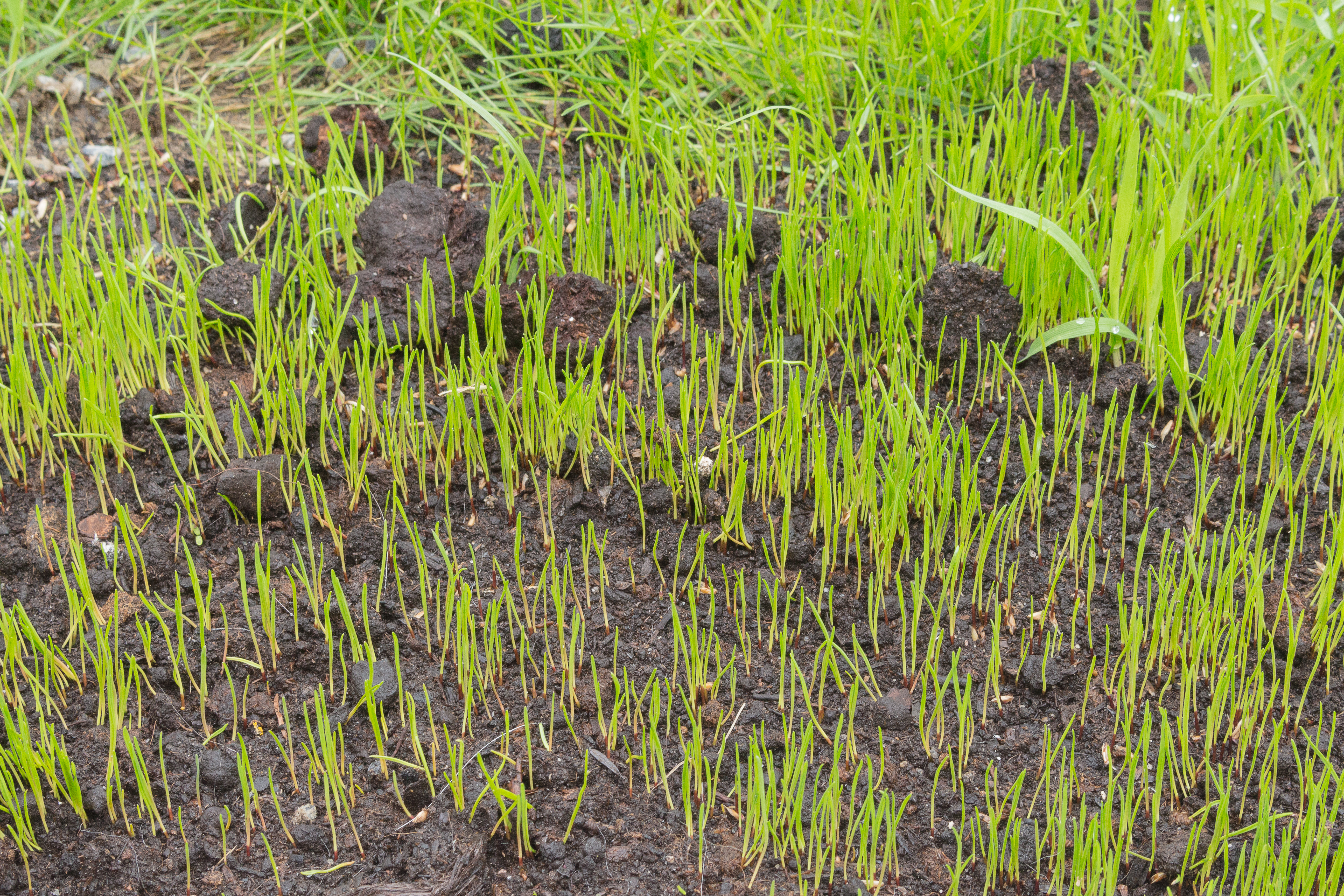How To Grow Grass In June

Weed seeds quickly germinate and grow in damaged areas where soil is compacted or grass is heavily damaged by insects and diseases.
How to grow grass in june. It was already mentioned that zoysia itself can keep weed at bay. Re-seed bare or damaged patches quickly. The ideal grass seed germination temperature for Kentucky bluegrass is between 59 and 86 degrees Fahrenheit according to PennState Extension.
They ought to be able to run a soil analysis for you and provide sound recommendations of soil amendmentsnutrients that can be applied to make your grass grow. June Grass will grow in the dry prairies of Midwestern USA. This will continue to encourage the grass roots to grow deeper in the soil.
Seed should be stored in a cold dry location until ready to use. Regular mowing of the lawn will also prevent the spread of weeds. After killing the grass that has already grown and that would have grown shortly you will need to prevent this from recurring.
About 4 weeks after applying the Starter Food feed your bermuda grass lawn with Scotts Turf Builder Southern Lawn Food. The recommended height of the zoysia grass is between 15 and 25 inches. Germination should take between seven and 10 days and seedlings will become established before the first severe frosts in late autumn this is the preferred time as the roots establish better through the winter.
The ideal temperature for rough bluegrass is between. However if the temperatures are high dont allow the soil to dry out. Germination is most responsive in the cool seasons.
Walk in different places to avoid compacting the soil or wearing bare spots in the grass. Read on to learn tips and tricks to help bring your garden to life Cabbage If you are new to planting cabbage is a great place to start as it is one of the easiest vegetables to grow. Add seeding soil to the top of your existing soil and smooth with the rake.

After killing the grass that has already grown and that would have grown shortly you will need to prevent this from recurring.
How to grow grass in june. Sow seeds on the surface of the soil with just a light dusting of soil to protect the tiny seeds from wind. Continue to fertilize every 6 to 8 weeks during the growing season stopping when the grass naturally slows its growth in early fall. Dig a planting hole place the plant in the hole so its planted at the same depth as it was in the original pot backfill and firm in.
The ideal temperature for rough bluegrass is between. Smooth the area with a rake and lightly pat it down. Herbicides are an excellent way of controlling the growth of weed grass.
About 4 weeks after applying the Starter Food feed your bermuda grass lawn with Scotts Turf Builder Southern Lawn Food. Regular mowing of the lawn will also prevent the spread of weeds. The soil is warm there is plenty of moisture and the weather is neither too cold nor too hot.
Grass grows best in full sunlight. Typical seasons to grow new grass are in the early fall and spring when temperatures remain mild but it is possible to establish a lawn during the heat of summer. Seed should be stored in a cold dry location until ready to use.
Planting grass by seed. Germination is most responsive in the cool seasons. If you are not using seeding soil add the starter grass fertilizer on top of the existing soil with a spreader.
June Grass can be found growing in sandy or coarser soils. Grasses do not need regular feeding. However if the temperatures are high dont allow the soil to dry out.

June Grass will grow in the dry prairies of Midwestern USA.
How to grow grass in june. This will continue to encourage the grass roots to grow deeper in the soil. How to Fertilize a Bermuda Grass Lawn. Sow seeds on the surface of the soil with just a light dusting of soil to protect the tiny seeds from wind.
Water plants in well. About 4 weeks after applying the Starter Food feed your bermuda grass lawn with Scotts Turf Builder Southern Lawn Food. Regular mowing of the lawn will also prevent the spread of weeds.
Planting grass by seed. Herbicides are an excellent way of controlling the growth of weed grass. To sow a stand of junegrass till the soil to a depth of at least 6 inches 15 cm.
The type of grass seed. Walk in different places to avoid compacting the soil or wearing bare spots in the grass. Grass grows best in full sunlight.
Typical seasons to grow new grass are in the early fall and spring when temperatures remain mild but it is possible to establish a lawn during the heat of summer. Grasses do not need regular feeding. The soil is warm there is plenty of moisture and the weather is neither too cold nor too hot.
Seed should be stored in a cold dry location until ready to use. The ideal temperature for rough bluegrass is between. As soon as the grass seeds sprout the tiny leaves begin using that sunlight to make energy that grows deep roots and lush leaves.








